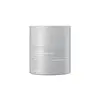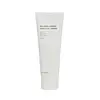What's inside
What's inside
 Key Ingredients
Key Ingredients

 Benefits
Benefits

 Concerns
Concerns

No concerns
 Ingredients Side-by-side
Ingredients Side-by-side

Cetyl Ethylhexanoate
EmollientPEG-10 Isostearate
EmulsifyingCaprylic/Capric Triglyceride
MaskingPolyethylene
AbrasivePEG-20 Glyceryl Triisostearate
EmollientSorbeth-30 Tetraoleate
EmulsifyingSorbitan Sesquioleate
EmulsifyingGlyceryl Caprylate
EmollientEthylhexylglycerin
Skin ConditioningCeramide NP
Skin Conditioning2,3-Butanediol
HumectantHydrogenated Lecithin
EmulsifyingGlyceryl Stearate
EmollientCeramide Ns
Skin ConditioningCeramide As
Skin ConditioningCeramide AP
Skin ConditioningCholesterol
EmollientCeramide EOP
Skin ConditioningTocopherol
AntioxidantPanthenol
Skin ConditioningWater
Skin ConditioningPantolactone
HumectantCetyl Ethylhexanoate, PEG-10 Isostearate, Caprylic/Capric Triglyceride, Polyethylene, PEG-20 Glyceryl Triisostearate, Sorbeth-30 Tetraoleate, Sorbitan Sesquioleate, Glyceryl Caprylate, Ethylhexylglycerin, Ceramide NP, 2,3-Butanediol, Hydrogenated Lecithin, Glyceryl Stearate, Ceramide Ns, Ceramide As, Ceramide AP, Cholesterol, Ceramide EOP, Tocopherol, Panthenol, Water, Pantolactone
Centella Asiatica Leaf Water
Skin ConditioningButylene Glycol
HumectantGlycerin
HumectantCaprylic/Capric Triglyceride
MaskingHydrogenated Poly(C6-14 Olefin)
EmollientWater
Skin ConditioningPropanediol
SolventDipropylene Glycol
HumectantPentaerythrityl Tetraethylhexanoate
Emollient1,2-Hexanediol
Skin ConditioningCyclohexasiloxane
EmollientHelianthus Annuus Seed Oil
EmollientCetearyl Olivate
Sorbitan Olivate
EmulsifyingAmmonium Acryloyldimethyltaurate/Vp Copolymer
Acrylates/C10-30 Alkyl Acrylate Crosspolymer
Emulsion StabilisingTromethamine
BufferingSalmon Egg Extract
Sodium Polyacrylate
AbsorbentBetaine
HumectantPanthenol
Skin ConditioningCamellia Sinensis Leaf Water
MaskingSodium Hyaluronate
HumectantEthylhexylglycerin
Skin ConditioningXanthan Gum
EmulsifyingAdenosine
Skin ConditioningDisodium EDTA
Dextrin
AbsorbentPortulaca Oleracea Extract
Skin ConditioningHydrolyzed Collagen
EmollientTheobroma Cacao Extract
Skin ConditioningTocopherol
AntioxidantHyaluronic Acid
HumectantMadecassoside
AntioxidantSodium Dna
Skin ConditioningMaltodextrin
AbsorbentPersea Gratissima Fruit Extract
EmollientHydrolyzed Hyaluronic Acid
HumectantCentella Asiatica Leaf Water, Butylene Glycol, Glycerin, Caprylic/Capric Triglyceride, Hydrogenated Poly(C6-14 Olefin), Water, Propanediol, Dipropylene Glycol, Pentaerythrityl Tetraethylhexanoate, 1,2-Hexanediol, Cyclohexasiloxane, Helianthus Annuus Seed Oil, Cetearyl Olivate, Sorbitan Olivate, Ammonium Acryloyldimethyltaurate/Vp Copolymer, Acrylates/C10-30 Alkyl Acrylate Crosspolymer, Tromethamine, Salmon Egg Extract, Sodium Polyacrylate, Betaine, Panthenol, Camellia Sinensis Leaf Water, Sodium Hyaluronate, Ethylhexylglycerin, Xanthan Gum, Adenosine, Disodium EDTA, Dextrin, Portulaca Oleracea Extract, Hydrolyzed Collagen, Theobroma Cacao Extract, Tocopherol, Hyaluronic Acid, Madecassoside, Sodium Dna, Maltodextrin, Persea Gratissima Fruit Extract, Hydrolyzed Hyaluronic Acid
 Reviews
Reviews

Ingredients Explained
These ingredients are found in both products.
Ingredients higher up in an ingredient list are typically present in a larger amount.
This ingredient is an emollient, solvent, and texture enhancer. It is considered a skin-softener by helping the skin prevent moisture loss.
It helps thicken a product's formula and makes it easier to spread by dissolving clumping compounds.
Caprylic Triglyceride is made by combining glycerin with coconut oil, forming a clear liquid.
While there is an assumption Caprylic Triglyceride can clog pores due to it being derived from coconut oil, there is no research supporting this.
Learn more about Caprylic/Capric TriglycerideEthylhexylglycerin (we can't pronounce this either) is commonly used as a preservative and skin softener. It is derived from glyceryl.
You might see Ethylhexylglycerin often paired with other preservatives such as phenoxyethanol. Ethylhexylglycerin has been found to increase the effectiveness of these other preservatives.
Panthenol is a common ingredient that helps hydrate and soothe the skin. It is found naturally in our skin and hair.
There are two forms of panthenol: D and L.
D-panthenol is also known as dexpanthenol. Most cosmetics use dexpanthenol or a mixture of D and L-panthenol.
Panthenol is famous due to its ability to go deeper into the skin's layers. Using this ingredient has numerous pros (and no cons):
Like hyaluronic acid, panthenol is a humectant. Humectants are able to bind and hold large amounts of water to keep skin hydrated.
This ingredient works well for wound healing. It works by increasing tissue in the wound and helps close open wounds.
Once oxidized, panthenol converts to pantothenic acid. Panthothenic acid is found in all living cells.
This ingredient is also referred to as pro-vitamin B5.
Learn more about PanthenolTocopherol (also known as Vitamin E) is a common antioxidant used to help protect the skin from free-radicals and strengthen the skin barrier. It's also fat soluble - this means our skin is great at absorbing it.
Vitamin E also helps keep your natural skin lipids healthy. Your lipid skin barrier naturally consists of lipids, ceramides, and fatty acids. Vitamin E offers extra protection for your skin’s lipid barrier, keeping your skin healthy and nourished.
Another benefit is a bit of UV protection. Vitamin E helps reduce the damage caused by UVB rays. (It should not replace your sunscreen). Combining it with Vitamin C can decrease sunburned cells and hyperpigmentation after UV exposure.
You might have noticed Vitamin E + C often paired together. This is because it is great at stabilizing Vitamin C. Using the two together helps increase the effectiveness of both ingredients.
There are often claims that Vitamin E can reduce/prevent scarring, but these claims haven't been confirmed by scientific research.
Learn more about TocopherolWater. It's the most common cosmetic ingredient of all. You'll usually see it at the top of ingredient lists, meaning that it makes up the largest part of the product.
So why is it so popular? Water most often acts as a solvent - this means that it helps dissolve other ingredients into the formulation.
You'll also recognize water as that liquid we all need to stay alive. If you see this, drink a glass of water. Stay hydrated!
Learn more about Water